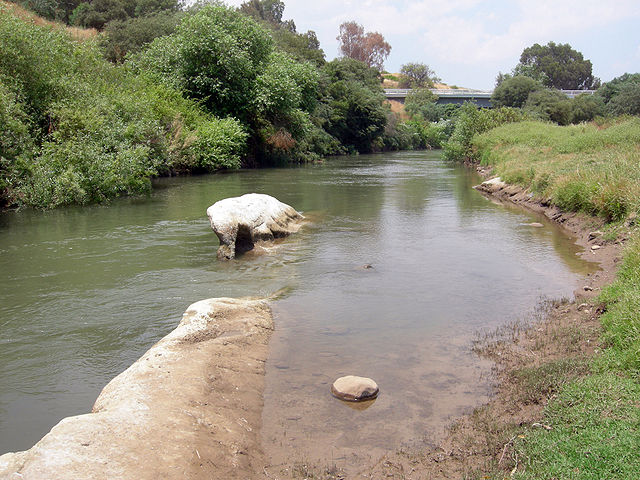Necessity has always been regarded as the mother of invention. In a world where clean air and water are becoming hard to come by, scarcity is proving to be the mother of innovation writes Anirban Ghosh.
Tragedy of the commons is the story of how we treat our social goods such as air, water, mangroves, parks, streets, etc. The commons belong to everyone so, on most occasions, no one takes care of them. The commons always end up as a tragic story. Examples of people taking care of the commons are uncommon and deserve to be celebrated.
The global population currently stands at 7.3 billion people. Global Footprint Network, an international research organization, states that currently we are using up the renewable resources of 1.6 Earths. Each year they mark the day we overshoot our resource budget for the year as “World Overshoot Day”. This year the day fell on August 2. What this means is that in the first seven months of the year we took more from nature than it can renew in the whole year. In 2012, that is five years ago, the day fell on August 6 and in 2007 it was August 15. This day is coming earlier and earlier every year. The Network says that if everyone were to like Americans we would need five earths to live on. Clearly doomsday isn’t that far unless we act now!
In future demographic changes will make an increased demand for natural resources inevitable. Degradation of these common resources will negatively impact human life. Nature, a scientific journal, says that contaminated air could cause the premature death of about 6.6 million people a year by 2050. The journal says that outdoor air pollution already kills about 3.3 million people a year worldwide.
A third of the planet’s land is severely degraded and fertile soil is being lost at the rate of 24 bn tonnes a year, according to the United Nations-backed study Global Land Outlook that calls for a shift away from destructively intensive agriculture. To add to this the United Nations Food and Agriculture Organization (FAO) in its latest report estimates the world population will surpass 9.1 billion by 2050, at which point agricultural systems will not be able to supply enough food to feed everyone the report concludes.
A study published in the book ‘Plastic Pollution’ (2012) estimated that there were approximately 165 million tons of plastic pollution in the world’s oceans, and with approximately 9 million tons being added each year. The water pollution is adding to its scarcity, The Food and Agriculture Organisation of the United Nations is predicting that by 2025, 1.8 billion people will be living in countries or regions with absolute water scarcity.
Throughout history, innovation has led to solutions that made life better. Human beings have dealt with scarcity for the greater part of their existence on earth. But scarcity, at most times, was local and could be dealt with through some innovative methods. But the scarcity of clean air, clean water, and fertile soil is becoming a widespread global problem and we increasingly need solutions that are global but can be implemented locally.
Each of the impending disasters presents an opportunity. Polluted air implies carbon-rich air. It offers an almost unlimited source of carbon to be used to make biochar, a soil fertility, and water retention enhancer. One team of young people have started to extract carbon from the air to make writing inks. As we try to reduce the carbon in the air many innovations and uses will emerge in the future.
The scarcity of land is triggering the practice of vertical farming. It is also triggering the method of living a “no waste to landfill” life with households adopting waste segregation and recycling businesses getting established.
Lack of fresh water is leading to questions being asked about the uses of fresh water. Construction using recycled water, treating sewage which would otherwise be dumped in water bodies to create fertilizer, recycling water used for washing cars and even adopting waterless car washes, urinals, and solar panel washing methods. The scarcity of water leads to the adoption of micro-irrigation by farmers and the use of water conservation methods by regular households.
Scarcity has led to the evolution of the sharing economy in transport and accommodation. Innovations that have become famous and widely used. There is a lot more that will happen as we battle climate change and adapt to the tragedy of the commons that we are causing. If you find the conversation on opportunities triggered by scarcity exciting send a mail and we can explore the subject together.
 Anirban Ghosh is the Chief Sustainability Officer at the Mahindra Group. He has been working with Group in Sales, Marketing, and Strategy since 1999 and has been recognized as a distinguished CSO in his current role. A gold medal-winning engineer from Jadavpur University, Calcutta, Ghosh has pursued doctoral studies in Marketing Management at IIM Ahmedabad. He enjoys music, reading, traveling, driving, cricket and tennis. He is an active public speaker and has represented the nation at the Festival of India across multiple nations.
Anirban Ghosh is the Chief Sustainability Officer at the Mahindra Group. He has been working with Group in Sales, Marketing, and Strategy since 1999 and has been recognized as a distinguished CSO in his current role. A gold medal-winning engineer from Jadavpur University, Calcutta, Ghosh has pursued doctoral studies in Marketing Management at IIM Ahmedabad. He enjoys music, reading, traveling, driving, cricket and tennis. He is an active public speaker and has represented the nation at the Festival of India across multiple nations.
Views of the author are personal and do not necessarily represent the website’s views.
Thank you for reading the story until the very end. We appreciate the time you have given us. In addition, your thoughts and inputs will genuinely make a difference to us. Please do drop in a line and help us do better.
Regards,
The CSR Journal Team


